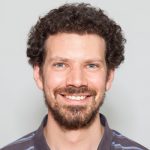Interview with Dr. Catherina Cader and Dr. Philipp Blechinger from Reiner Lemoine Institute. They explain how work package 3.4 of the EnerSHelF project develops a cost-effective electrification strategy to implement PV-hybrid systems for the health care facilities and surrounding communities.
Work package 3 aims to improve the country- and sector-based forecast of solar power generation (PV) and consumption (health facilities). What is the specific aim of your work package “Development of an electrification strategy for medical institutions”?
In our work package, we develop a data-driven nationwide market introduction strategy of PV-hybrid systems for health care facilities and surrounding communities in Ghana. For the derivation of the strategy, infrastructure data and spatially resolved socio-economic data in combination with irradiation data will be used. Thereby, a technical-economic evaluation allows an assessment of the market potential for PV-hybrid systems in the Ghanaian health care facilities. Finally, the results will be used to develop a comprehensive, cost-effective electrification strategy that considers off-grid and on-grid solutions not only for healthcare facilities but also for surrounding communities.
How do you address this, what activities have you planned?
Starting with a GIS (Geographic Information System) data analysis, we will conduct a pre-feasibility analysis based on a simplified dimensioning algorithm for PV-hybrid systems. This results in the development of an electrification strategy composed of six working steps:
1. We use remote sensing to identify communities in the vicinity of the health facilities.
2. With the help of household surveys, we analyze the socio-economic status of the identified communities to determine load profiles.
3. We conduct an infrastructure analysis to identify existing electricity grids and power plants in the in the investigated study area.
4. We model off-grid PV-battery diesel systems to cover the load of the surrounding communities of the health stations to determine cost structures, system sizes and added value for the communities.
5. As a comparative path, the connections of the health facilities and the surrounding communities to the central power grid is modelled. The costs of the connections are simulated, and it is determined whether the off-grid infrastructure can support the existing grid.
6. Finally, the results are visualized with the help of a web map.
What are the results so far, and the next steps?
Since this work package is first going to be kickstarted in September, there are no results available yet. Over the next weeks, a more detailed plan is worked out for the second half of 2020.

Catherina Cader is leading the research at Reiner Lemoine Institute for the EnerSHelF project. She is an expert in Geographic Information Systems (GIS) and rural electrification planning. She has been working at Reiner Lemoine Institute since 2012 and is the Deputy Head of the Research Unit Off-Grid Systems since January 2020. Catherina Cader holds a PhD in Geography from Justus Liebig University Giessen and a M.Sc. in Geography from Philipps University Marburg. She is particularly interested in rural electrification planning in countries of the Global South with consideration of renewable energy. By developing and applying GIS-based methods, she brings the spatial component into RLI research and the EnerSHelF project using open source software.

Philipp Blechinger is the project leader for EnerSHelF at Reiner Lemoine Institute. Currently, he is heading the Off-Grid Systems Research Unit and develops and manages projects and strategic processes. He holds a PhD in engineering about “Barriers to implementing renewable energies on Caribbean islands” from TU Berlin, where he previously studied business and engineering. Philipp Blechinger is an international expert in island energy supply and rural electrification, specifying on simulating and optimizing hybrid mini-grids and electrification planning. In 2019, Philipp was appointed Visiting Scholar in the Renewable and Appropriate Energy Laboratory (RAEL) of the University of California, Berkeley as part of the C-BEAR+ project.